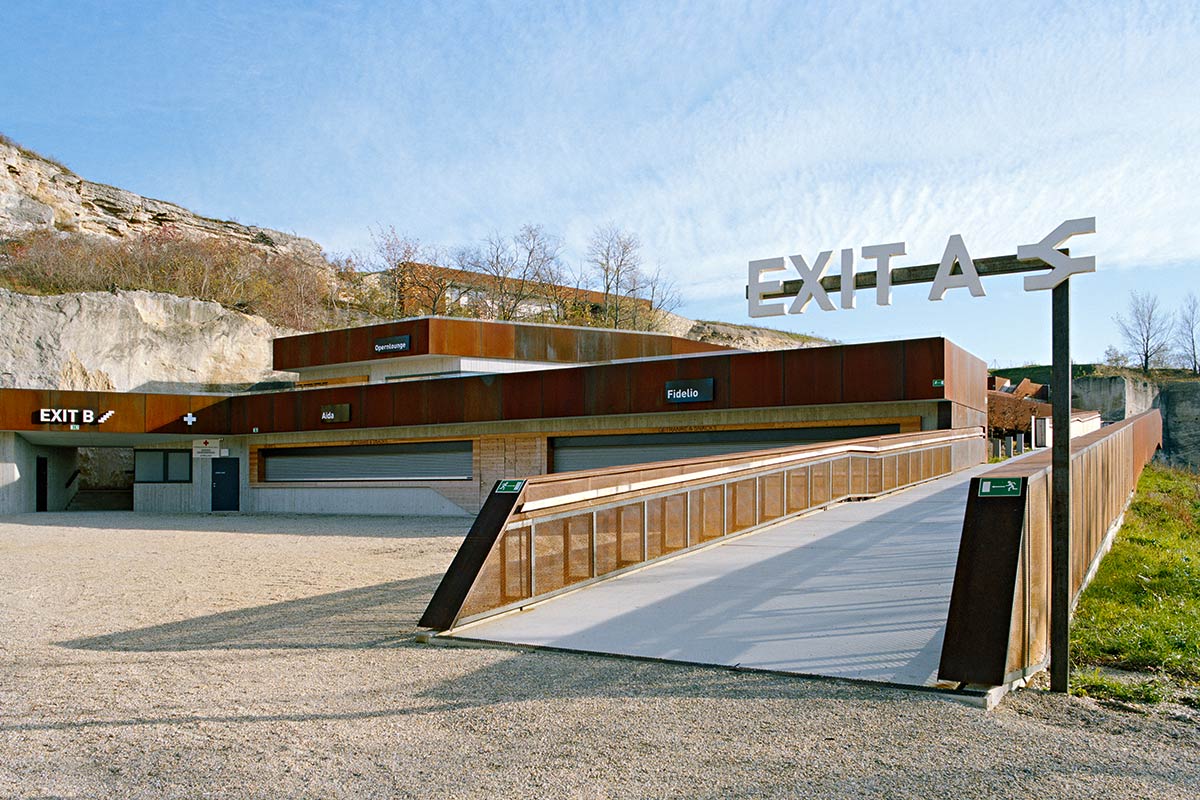
A show in the Roman quarry doubtless is a unique experience for every visitor, whether it is the classical-music lover enjoying a performance of the opera festival or a local watching the annual passion play with his friends as amateur actors.
The playing and singing under the open sky on a gentle summer night, far away from the noise of the street is an experience that even the average visitor who is not too much into opera and passion plays will find overwhelming.
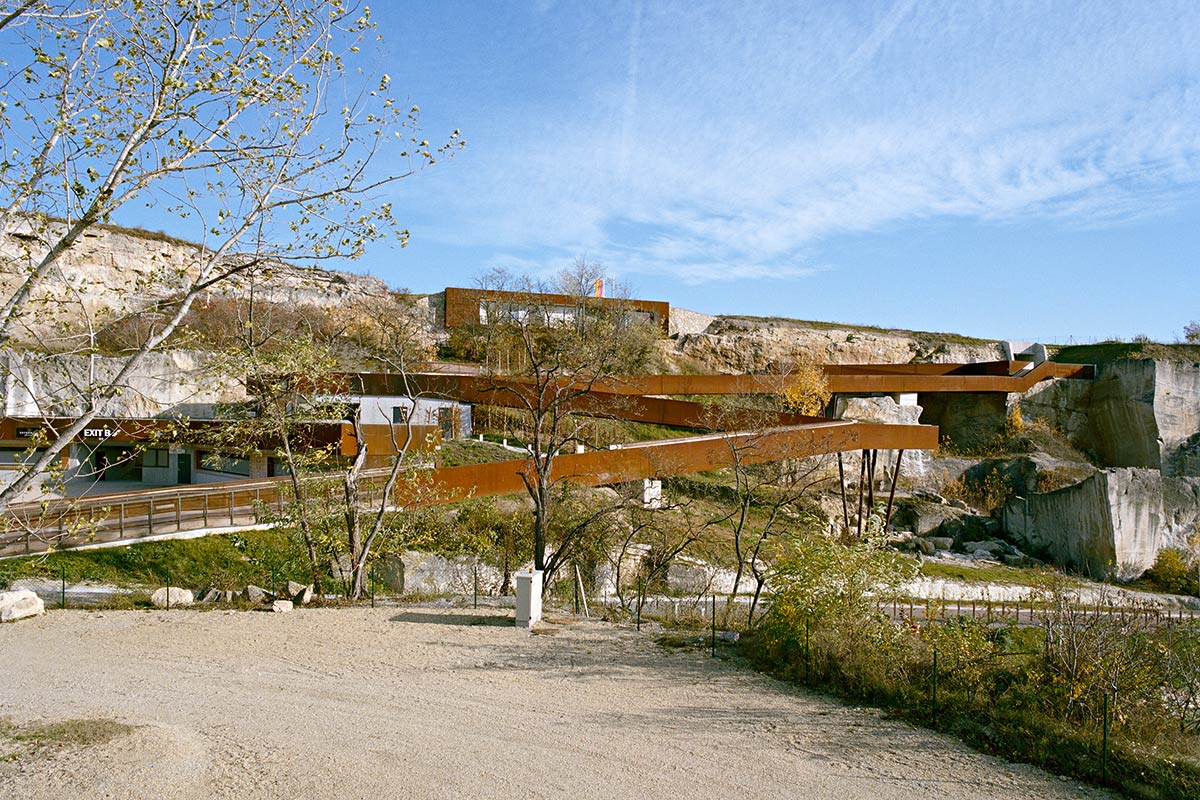
Until now, though, it has only been the stage itself that has benefited from the ambience of the location, unique in Austria, whereas the path used by visitors to get from the parking lot to their seats in the auditorium and back always was an un-atmospheric, merely functional access way.
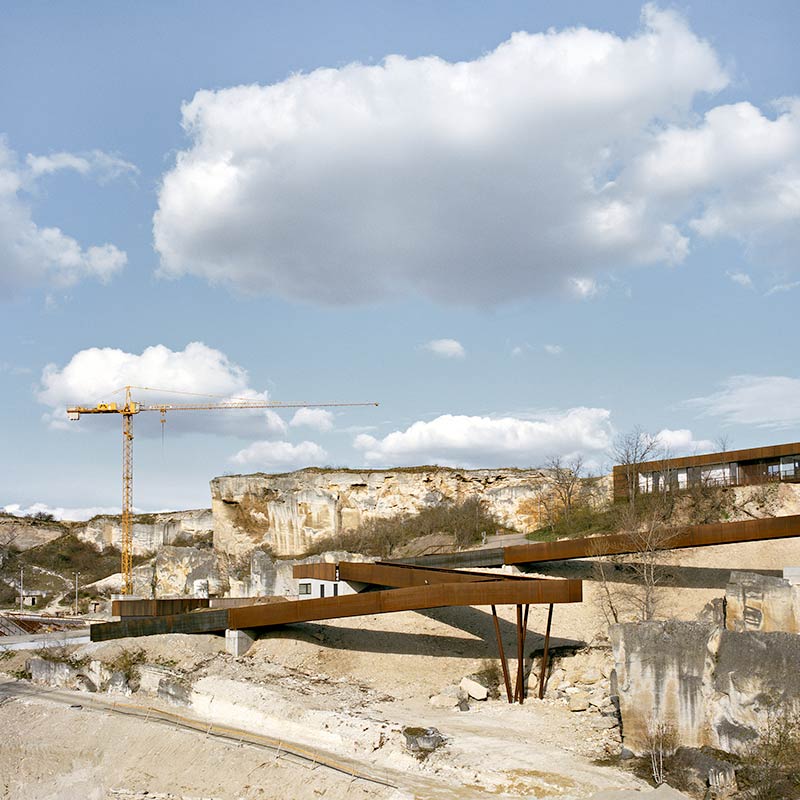
The basic idea of the design is to extend the ambience of the magnificent rock-face scenery to all parts of the theatrical arena so as to make it a more palpable and visual enveloping experience.
It is difficult to realize that this impressive scenery which is characterized by precise cutting edge, exactly worked surfaces and well-advised subtraction of the ground is only a by-product of mining resources a long time ago.
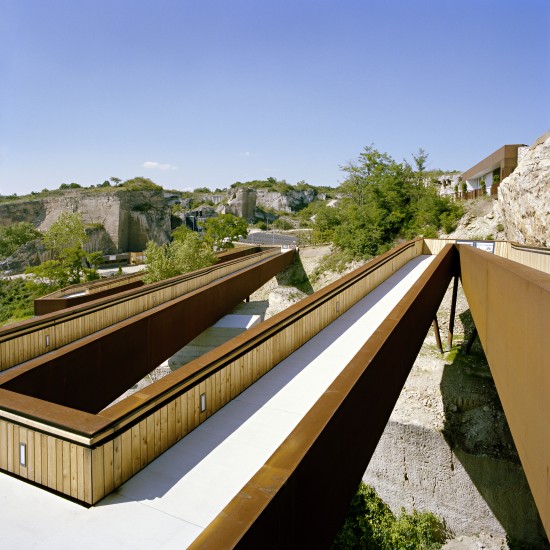
Furthermore it seems that the two Japanese guys from the Sculpture Symposium, who have created the “Japanese Channel” by hurting the compact rock in a nearly impossibly precise way, might have transformed the meadow from Burgenland, which is called the “Austrian Grand Canyon” in the same way.
That’s why it seems logical to take the “Japanese Channel” and its principals as a method and role model for a redesign, which is more likely seen as a continuation of this sculptor art work.
-Accuracy: clear and simple language of shapes
-Reduction: reflexion to the essential
-Subtraction: adding via taking out
Principal Organisation
-The theatre serves as a role model for the organisation of the particular functions. Short lanes inside the area are needed to welcome the estimated number of visitors which adds up to 6000 persons.
-The spectacle acts as a role model in order to create an spatial experience as well. It asks for moments of surprise and staging of lanes and lounges.
At the parking the visitor is welcomed to the world of the Roman squarry with an announcement board (+20,00m).
Through a cut in the rock the visitor is diving down into the stone. After passing the underground entrance building (+16,00m) at the edge of a cliff of the areal he finally can orientate himself/herself.
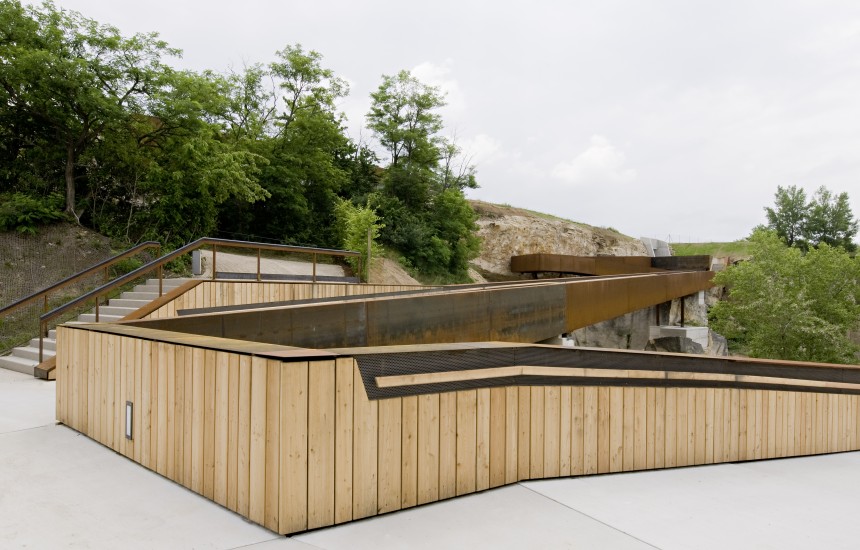
After a ticket control a handicapped accessible ramp with a length of about 400m leads the visitor above canyons along the rock faces down to the 19 m deeper level where the festival site lies. The visitor enters the foyer square (-3,00m) in the East through a massive rock formation which is bordered by an artificial angle in the site formed in the West. That is where he/she is welcomed by the hostile audience caterers. The foyer square serves the sojourn and strolling before the start of the show.
Behind the central rock formation lies the already existing audience area inclusive natural stage (+-0,00m). In between, along the Western rock face the toilets sprawl strategically arranged from North to South on the level of the grandstand as well as on the level of the foyer square.

The visitor has two possibilities to reach the seats from the foyer square to the level of stage, which is about 3 m higher, according to the seat number.
-Visitors who are seated on the left (North) step over a huge free space stair case to the “pass” in order to get the first impression of the stage.
-Visitors who are seated on the right (South) dive through a tunnel in the rock formation in order to reach the visitors area from the boulevard.
Both ways hold a surprise- and tension moment, the rock takes over the role of the stage curtain and veils the spot of action for the time being. Furthermore it offers a natural noise protection between catering area and stage area.
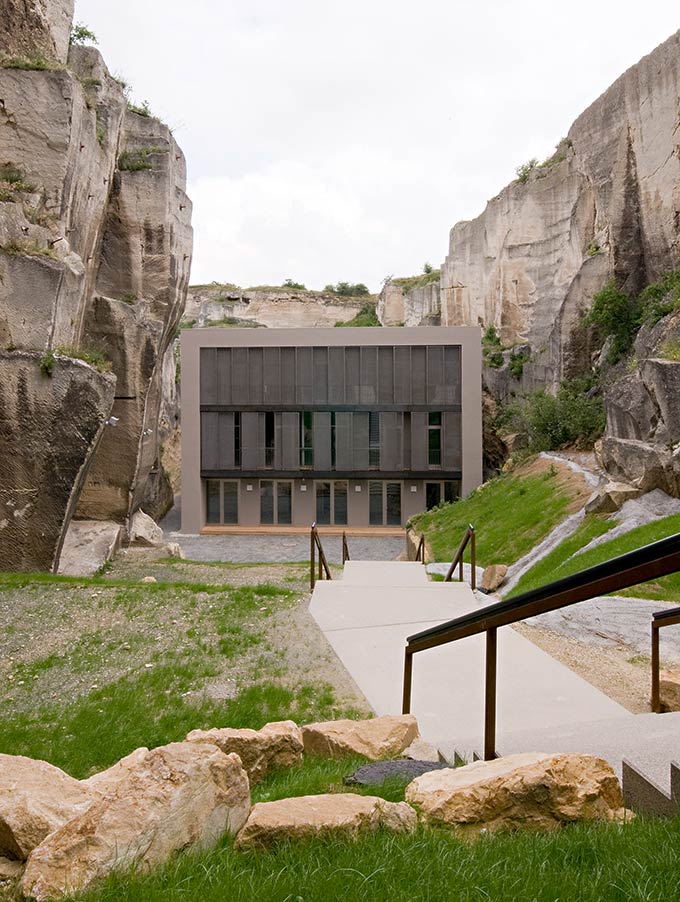
Alternatively to both main accesses there is an access possibility for people in wheelchairs south of the rock that directs along the ramp over the park till the foremost reserved seats.
The boulevard sprawls as a continuous arbour of the tunnel to the backstage area and connects the park situated in the South with the tribune.
The VIP-areas are situated in places with respectively laconic areal quality and spread over the whole premises that can be used.
Artists and office staff have their own separate access coming from the parking. It leads over a free space staircase directly into a forecourt, which marks the end point of the boulevard arbour. The backstage building hides behind the rock of the natural stage, to not to disturb.
Project Details:
Location: St. Margarethen, Austria
Type: Cultural – Public
Gross floor area: 5.580m²
Outdoor Spaces: 4.430m²
Architects: AllesWirdGut
Photographs: Hertha Hurnaus


